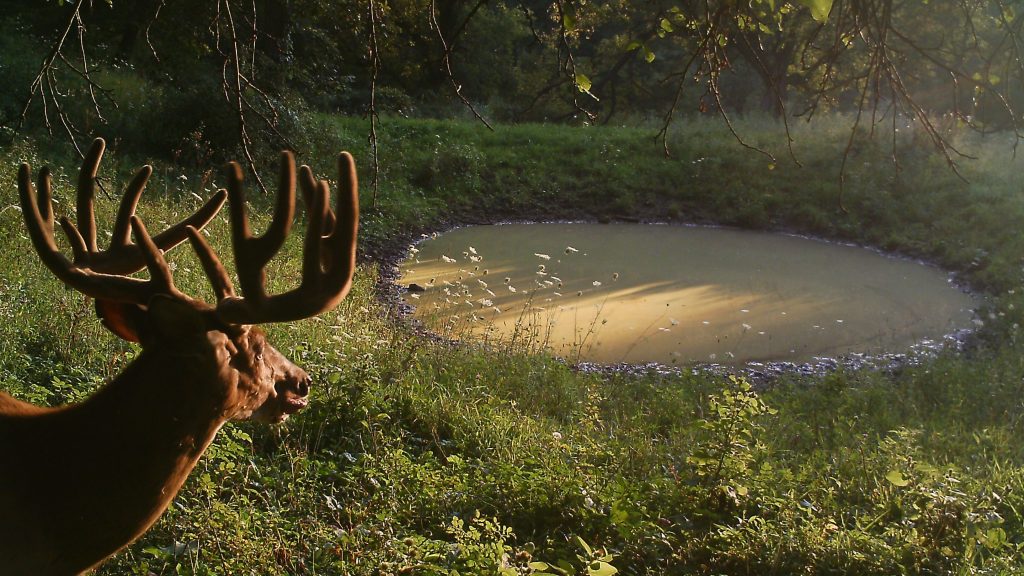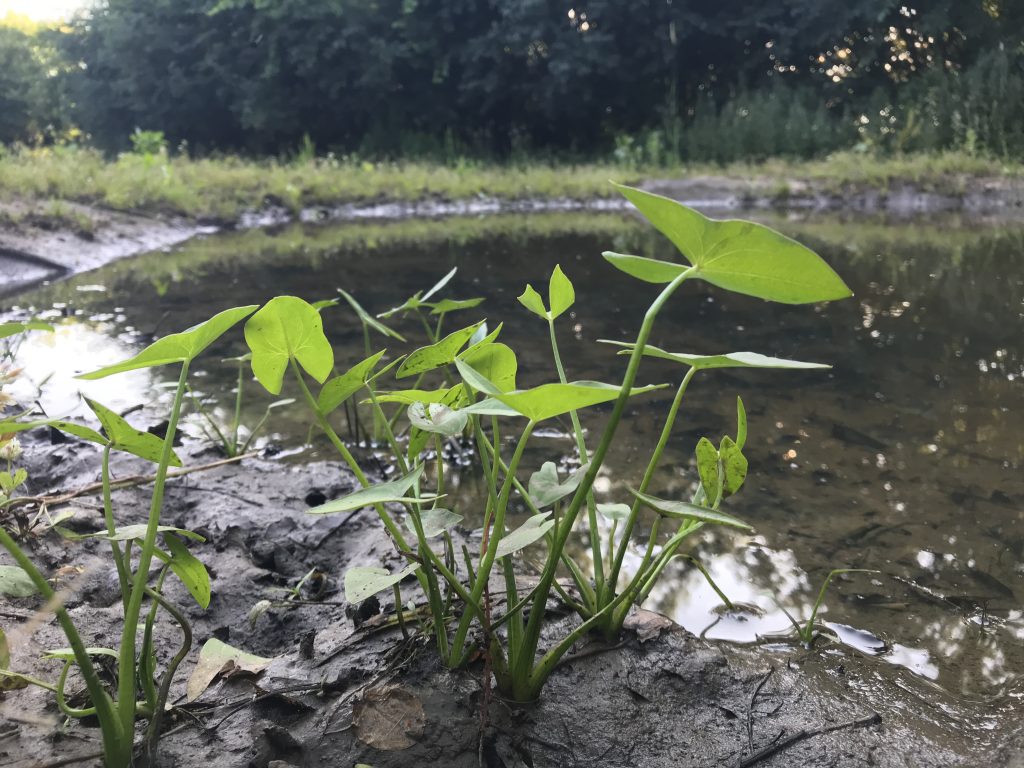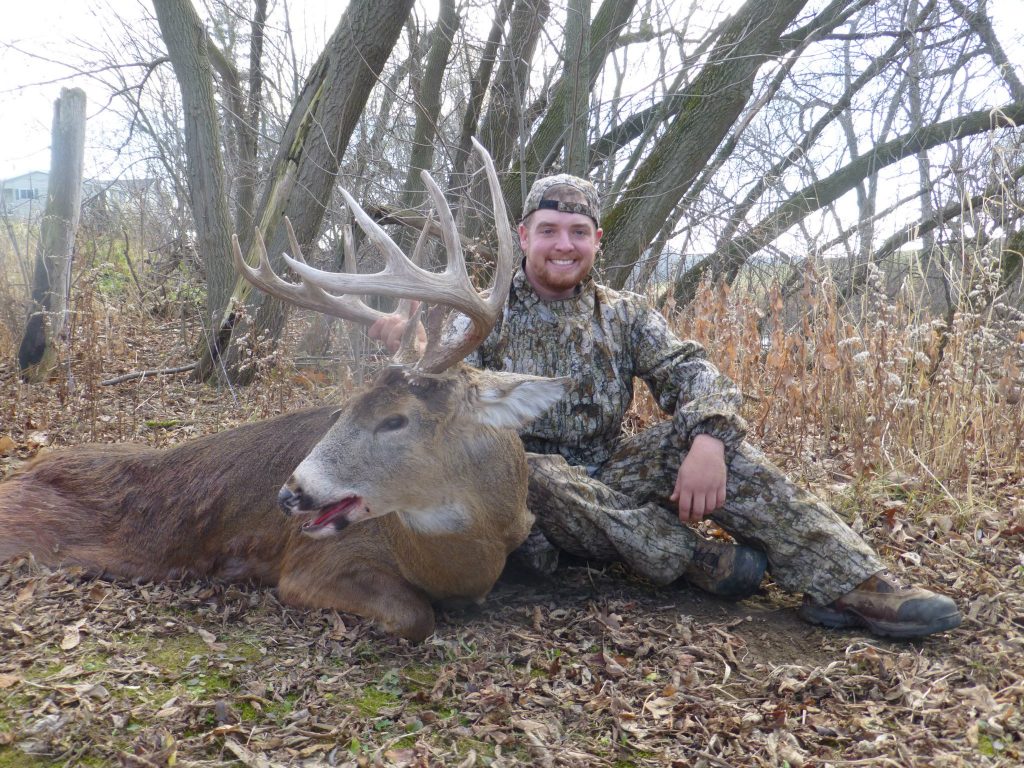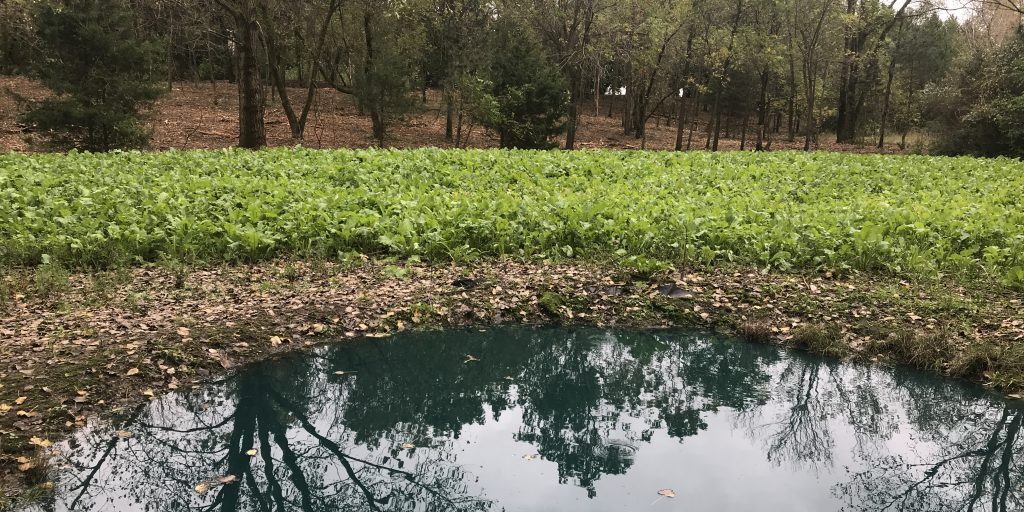By: Zach Haas – Senior Aquatic Biologist & Director of Operations, Wisconsin Lake & Pond Resource LLC

Every year property owners, conservationists, and hunters are looking at how they can improve properties for wildlife. One of the most overlooked items these individuals miss are water sources.
Why Water?
All living things on this planet require water in order to survive. On average a white-tailed deer requires approximately 3-6 quarts of water per day. This quantity is impacted greatly by moisture content in forages, temperature, what processes are happening (lactation, antler development, weaning, etc.), season (summer vs. winter) and humidity. Deer require around 4-5 percent of their body weight of water in the summer and 1-2 percent in the winter. Surface water varieties (ponds, streams, creeks, etc.) become extremely valuable when forages begin disappearing from hot weather, ephemeral ponds dry up, and biological processes ramp up (lactation, antler growth, etc.). If restriction of water becomes evident, research has proven that deer will reduce food intake. Furthermore, if food intake goes away, health and growth disappear as well.
Creating Quality Water
The hottest trend in the management world right now is the use of stock tanks and tubs for water for wildlife. However, these tubs and tanks only create what we call the “aquarium effect”. To show what we mean, take a 20-30 gallon aquarium tank and fill it with water. Leave the tank sit in room temperature without adding any chemicals or filtering device. Quickly that once clean tank will begin turning green and harboring harmful anaerobic bacteria. Deer and most wildlife are much smarter than us humans. They can sense that the water is not of high quality and typically will not drink from these sources. This is the same reason why they prefer warmer water sources (tubs, ponds, etc.) as colder water sources (springs, rivers, creeks, etc.) shocks their bodily systems. This is why we recommend installing properly designed wildlife ponds.
A properly designed water hole/wildlife pond should have a gradual slope to ensure a deer can easily go in and out of the pond. If the pond is too steep the deer won’t use it, and if the pond is too shallow you increase potential for harmful algae blooms and killing the ecosystem through excessive heating. To help with management of the pond a depth of 3+ feet should be achieved. This would make the pond roughly 20-30 feet in diameter. To increase the depth, you will either have to make a larger diameter pond or increase your end slope in areas of the pond.
You are probably thinking, “That is great and all, but how will I hold water?”. Some individuals will get lucky and either hit a spring or hit ground water. However, for those that have that perfect spot for a pond on top of a sandy hill, a synthetic liner can be your savior. For this you will want an actual pond liner designed not to leak as most tarps and canvases are not leak resistant and tear easily. A true pond liner will hold water meanwhile being strong enough to prevent rips/tears from deer hooves. Furthermore, unlike the typical bentonite clay that people have used to hold water in their ponds/waterholes, the synthetic liner does not leak as easy, and leaks are much easier to locate and repair.
The last step of creating quality water is to add a layer of sand, dirt, or gravel on top of the liner. This will help become the planting substrate for your beneficial aquatic plants, and provide bio-media for beneficial bacteria to thrive. Furthermore, the sand, dirt, or gravel will also help to cushion the liner and create a substance in which wildlife can walk freely on with reduced or non-existent slipping. Before you do this step make sure to place some landscape fabric down so that the sand, dirt, or gravel stays in place.

Placement of Water Sources
Now that you know the general idea of creating quality water let’s look at where to place those ponds. Deer prefer secluded areas with minimal pressure. For that reason, deer typically stick to edges, corners, and vegetated areas. Wildlife ponds are best placed in areas where deer walk out into a food source, and near bedding areas.
Deer do tend to visit areas more frequently where all three management needs (forage, cover, water) are fulfilled. Since does require increased water during lactation and bucks require increased water during antler growth, we like to see water sources near summer bedding. Once the fall rolls around most forage sources of water disappear so for that reason, we like water sources in food plots and fall/winter bedding. These wildlife ponds will be sought after during the rut especially.
It is best to place your water sources within bow and/or gun range from your stands. Placing debris on the backside of the pond or digging deeper slopes in inconvenient can help force deer to provide better shot angles. So, get creative and start placing those ponds to increase your success at those hot spots on your properties.
Aquatic Food Plots
Today’s hunters are essentially obsessed when it comes to providing food for their herds. For this reason, many overlook other management strategies. What if I told you that those wildlife ponds you have can be turned into more food for your deer, and help maintain those water sources? The best plant for getting the best out of both worlds is commonly known as Arrowhead (Duck Potato).
Arrowhead utilizes nutrients in the water very efficiently which in turn creates a nutrient rich forage for your deer herd. Deer love these plants for their tender shoots, tubers, and seed heads. Not only is arrowhead working as a forage, but it is also continually filtering out your wildlife pond. This natural “filter” is no different than the filter you put into your pool to keep out the junk, but in this case the “junk” is the excess nutrients. Arrowhead can either be planted as a plug or by seeding the area, and should be planted right at the interface where the soil and water meet. In addition to arrowhead, other beneficial aquatics plants can be installed to further improve your pond’s draw and health.

Maintaining Your Water
The process of maintain quality water begins with ensuring that there is a balanced ecosystem. This balance is created with the correct abundance and combination of beneficial aquatic plants, benthic and columnized bacterium, and water conditions that are within water quality standards.
One of the most important parts of a healthy aquatic ecosystem are beneficial bacteria. You may ask yourself, “Isn’t bacteria bad?”. The answer is quite simple, no. One of the most overlooked building blocks in most aquatic ecosystems is beneficial species of bacteria. Beneficial bacteria actively work on nitrification, denitrification, ammonification, oxidation, reduction, and nutrient remediation. Maintaining a healthy bacteria community will help ensure that the water quality is maintained by remediating organic build-up and reducing nutrient levels in the water. Other management tools include pond colorants, native aquatic plants, enzymes, aeration, and proactive algaecides.
Putting Together the Whole Idea
Putting water on a property is not a single concept, but rather a collection of different strategies. Treating your water source more like a living breathing organism rather than just a hole in the ground will help you gain more control of your management plan and the ecosystem as a whole. If you take the time this season to manage your current water holes and design your new watering holes according to the information provided here, you can help increase your effectiveness as a land manager and increase your success this hunting season.


